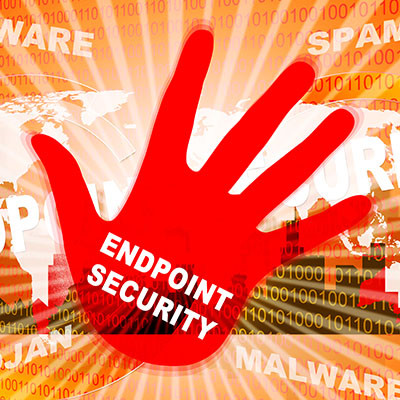In efforts to curb the semiconductor shortage and jumpstart the technology industry, the United States Congress passed legislation that includes funding for manufacturing semiconductors. Partially in response to China’s increasing economic influence and partially in response to the semiconductor shortage, the CHIPS Act could be just what industry leaders need to kickstart the manufacturing of these important devices.
Washington Works Blog
More businesses than ever before are seeing the value of outsourcing their technology management to a managed service provider (MSP) and it’s easy to see why. With a more hands-off approach to technology management, businesses can focus on delivering quality goods and services instead of worrying about their technology. If you are considering jumping on the MSP wagon, consider asking the following questions to make sure you understand what you are getting from your provider.
We’re not shy about sharing how important it is for a business to have comprehensive cybersecurity throughout its entire infrastructure. That’s why we wanted to share what some recent data has shown about the importance of having visibility into your infrastructure.
Spoiler alert: it’s really, really important.
Sad to say, but for the foreseeable future, cost control is going to be the number one priority for almost every business. With the impacts of the COVID-19 pandemic still lingering, and revenue streams interrupted, many businesses are still being extremely cautious with their capital. One place where most businesses can cut back is on printing. Let’s discuss how to cut your organization’s printing costs.
At first glance, cybersecurity might seem incredibly complicated and difficult to understand, but even a baseline understanding of some of the principles of cybersecurity can go a long way toward protecting your business. Let’s discuss some of the common-sense ways you can keep your business secure, even if you don’t have an internal IT department to ask for help from.
For all the events that have made business more difficult over the past several years, you probably wouldn’t be surprised to learn that businesses have been more open to change the way they do things if it means that they can meet the demands placed on them by the market. These days, there are some technologies that will be a big part of business headed forward, but you may think that they are out of your business’ price range. Think again. Let’s take a look at three robust technologies and how you can use them in your business.
Mobile devices have changed the world. They’ve definitely changed the way people do business. The prevailing sentiment is smartphone innovation has stagnated a bit over the past few years as most of the flagship smartphones are using extremely fast processors, data storage has moved to the cloud, and many other factors. Just look at the new iPhone, which traditionally looks just like the last iPhone. Today, we’ll take a look at what you need to know when buying your new phone.
Most business owners are looking for a way to cut their costs. One way that many firms can see some cost reduction is to increase productivity through solid collaboration. Today, there are many digital tools designed to get more eyes on a project, but they may not completely fit your strategy. Let’s look at some strategies that are used to promote collaboration, and some tools that can fuel these enhanced collaborative efforts.
In business, experience is always useful. Nowhere is that more apparent than when managing your organization’s IT infrastructure. The problem is that acquiring the expertise to do just that can be quite confusing for most business owners. Today, we’ll talk about how technology management experience can produce better business from one end to the other.
The effectiveness of your business’ IT security is largely contingent on how your IT operates. As a result, it is extremely important to ensure that your staff understands the role they play in protecting your business’ assets. This month, we discuss what you should prioritize when putting together a security training platform; an essential part of any business’ attempts to keep their IT secure.
It doesn’t matter if your workplace is your typical office space or if it is remote. There will always be factors that can contribute to burnout. These struggles are not exclusive to the location of the office, and if left unchecked they can impact work performance, productivity, mental health, and so on. It’s important that you have coping mechanisms and strategies in place to address burnout before it becomes too severe to counter.
How often do you get emails from individuals claiming to be working with a business who wants to do business with yours or sell you a product, completely unsolicited and even perhaps a bit suspicious? These types of messages can often land small businesses in hot water, as it only takes one phishing email landing in the wrong inbox at the wrong time to put your business in jeopardy.
This past year saw a dangerous 86% increase in the most dangerous types of malware out there, so we want to ask you an important question: are you ready to protect your business from the different types of threats you might encounter? We know a technology solution that might help this mission along, and we want to share it with you today: artificial intelligence.
Ultimately, your employees are going to be the ones using your technology to accomplish their daily duties, so it helps to treat them like customers rather than end users. If you examine industry trends to make the best decisions possible with your technology and communications solutions, then you’ll allow your team to flourish in the process.
Today, there is a greater focus on mental health and wellbeing than ever before, especially in the shadow of the pandemic. Do you want to improve your employees’ relationships with their colleagues, family, and other important people in their lives? The key to doing so might be remote work, according to a new survey.
For a business, technology solves a lot of problems. Covering operational pain points is what it does best, after all. Unfortunately, they come with their own pain points that have to be dealt with. In today’s blog, we’ll give you a list of common technology pain points a small business can have and how managed IT services go above and beyond to mitigate those problems.
The average person will spend an estimated one-third of their life at work. One third. That’s a lot of time, providing plenty of opportunity to accumulate stress. Over time, these emotions could potentially overwhelm your employees and lead to a breakdown. This is, naturally, harmful to your business, so let’s explore some strategies you can share with your team to help them deal with their workday stresses.
It’s easy to use the terms “patches” and “updates” as if they mean the same thing, and they are often used interchangeably within the same context. However, understanding the difference between the two can make a world of difference in terms of how you approach implementing each of them. We’re here to clear things up a bit and help you better understand the patches and updates you deploy on a month-to-month basis.




















